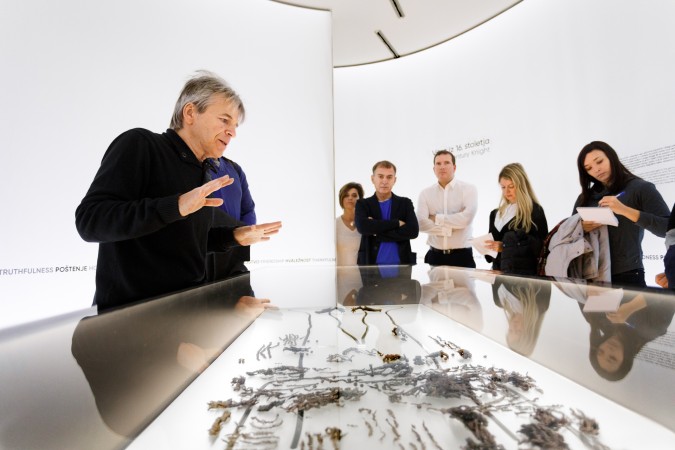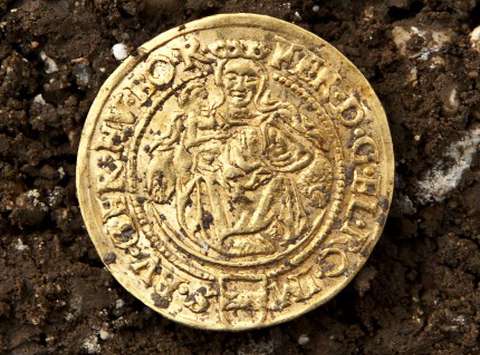16th Century Knight
In the Middle Ages, knights mostly belonged to the gentry. They served their feudal lord and in return for payment (or land) did military service and performed other tasks as well.

They were professional soldiers, while an invaluable part of the military at the time was a well-trained horse. The discovery of two gilded spurs from a grave found in the graveyard next to the Church of St. Peter (under the present-day Njegoševa cesta) indicates the high social rank of the deceased.
A gold coin forged in 1559 in Kremnitz (one of the mints of Ferdinand I) was found next to the knight. The name “ducat” probably comes from the Latin word ducatus (dukedom). The coins were modelled after the Venetian coins from the 13th century and the name “ducat” was soon established for gold coins forged in different mints. The Venetian ducat was in widespread use all over the world and is known as one of the most stable currencies of all time.
The grave also included fragments of clothing in which the deceased was laid to his final rest. Analyses have shown that the fabric was made of silk, coloured with shades of red and orange. The fine silk threads were woven in a plain weave technique, with a weave thickness of 45x60 threads per cm2. The trimming of the clothing was made in a special way: a gilded silver band (0.5 cm wide) was wrapped around the silk yarn (probably yellow in colour).
Anthropological analysis of the skeleton has shown that the deceased was a male, aged between 30 and 34 at the time of his death, approximately 165 cm tall.
Pathological changes indicate severe dental problems, an advanced dental disease, which caused the teeth to fall out. The bone was also severely affected, especially the upper jawbone, where traces of abscesses and chronic inflammation were visible. It is also worth mentioning the pathological changes on the vertebrae and the sacrum, which could be attributed to physical stress (riding a horse). Changes that could be related to chronic inflammations are also visible on the leg bones. The inflammation in the oral cavity could have spread through the blood circulation to other parts of the body, which could have been fatal for our knight.

